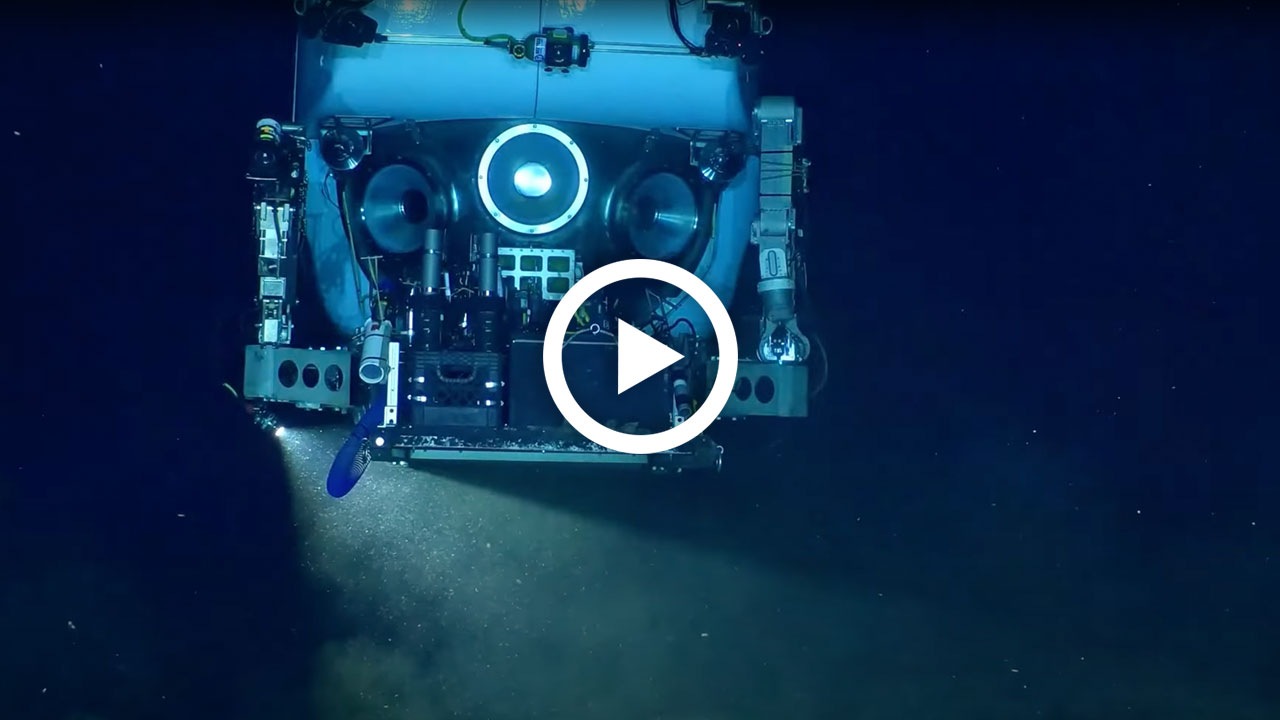Multimedia Items
Ocean Encounters: Geology Rocks!
Join us as we talk with three people with very different jobs—all in geology—about how they got into the field and where their careers are taking them.
Read MoreAsking ocean explorers deep questions
WHOI deep-sea experts join NOAA Ocean Exploration in this webinar for middle school students
Read MoreOcean Encounters: Restless Seas
Join three WHOI scientists for a discussion about ocean currents, how they are changing, and the implications for marine life and all of us.
Read MoreWhat’s for dinner, deep-sea isopod?
Four miles below the surface, scientists in #Alvin witnessed this rarely-seen invertebrate paddling along with oar-like legs in search of its next meal. In a recently-published study, #WHOI researchers share another surprise: that seaweed they’re munching on isn’t native to the seafloor!
📲 Find out what it is– and how this species has adapted over time: go.whoi.edu/isopod-food
Read MoreWhat does living ocean mean to you?
WHOI staff tackle a tough question about life in the big blue
Read MoreEvaluating Ocean Climate Solutions
In case you missed it, watch the WHOI public information session on marine carbon dioxide removal and the LOC-NESS Project
Read MoreBoundary of Creation: A Report on Project FAMOUS
Celebrate 60 years of Alvin with an inside look at the global mission to map the Mid-Atlantic Ridge
Read MoreThe Biological Pump
Used in Oceanus magazine, Vol. 54, No. 1, pg. 19. (Illustration by Eric S. Taylor, © Woods Hole Oceanographic Institution)
Read MoreRadioisotopes Tracking Tuna Migration
Infographic showing radioisotopes tracking tuna migration. (Illustration by Eric S. Taylor, © Woods Hole Oceanographic Institution)
Read MoreHow subterranean water seeps into the continental slope
How subterranean water seeps into the continental slope. (Illustration by Eric S. Taylor, © Woods Hole Oceanographic Institution)
Read MoreHow subterranean water seeps into the continental shelf and into the ocean
How subterranean water seeps into the continental shelf and into the ocean. (Illustration by Eric S. Taylor, © Woods Hole Oceanographic Institution)
Read MoreIsochrysis algae to biofuel and jet fuel
A common algae commercially grown to make fish food holds promise as a source for both biodiesel and jet fuel. Researchers Greg ONeil of Western Washington University and Chris Reddy,…
Read MoreFAMEs and Alkenones algae biofuel
FAMEs and Alkenones algae biofuel illustration. (Illustration by Eric S. Taylor, © Woods Hole Oceanographic Institution)
Read MoreIllustration representing the Equatorial Undercurrent
The scientists model revealed a potential change in how the EUC would operate in a warmer world: As temperatures rise and equatorial trade winds weaken, the Pacific surface current would…
Read MoreThe Equatorial Undercurrent
At the equator, trade winds push a surface current from east to west. About 100 to 200 meters below, a swift countercurrent flows in the opposite direction. This Equatorial Undercurrent…
Read MoreEarth and its water coverage in relation to its size
Earth is an ocean planet. More than 70% of its surface is covered by ocean with an average depth of just over two miles. But how much water is there…
Read MoreThe Biological Pump
Used in Oceanus magazine, Vol. 54, No. 1, pg. 19. (Illustration by Eric S. Taylor, © Woods Hole Oceanographic Institution)
Read MoreEdible Seaweed
Humans have eaten seaweed for centuries—pickled, dried, and raw—adding a deep savory flavor known as umami. When farmed, seaweed improves water quality and absorbs excess carbon. Some varieties provide as…
Read MoreWhat is a rogue wave?
Behemoth waves are more than just folklore. Learn the science behind these deadly swells.
Read MoreHow do corals form colonies?
If you stare at just one spot on a coral reef, your eyes could be seeing more than 1,000 animals per square foot. That’s because the thing that makes up most of these marine ecosystems are tiny living animals called coral polyps, which exist on the surface of reef formations. Hundreds or thousands of identical polyps live together to form a colony. So, how do these tiny creatures build and maintain such large colonies?
Read MoreWhere does all the carbon go?
Like car windows on a sunny day, carbon dioxide and other greenhouse gases help trap the sun’s heat, keeping it close to Earth’s surface. To an extent, this is a good thing. Without that warming, Earth would be a ball of ice. But too much carbon dioxide in the atmosphere means too much warming. The key to preventing runaway climate change is to remove excess carbon dioxide from the atmosphere, but where can it go?
Read MoreWhat are marine microplastics?
A 2015 study estimated that roughly eight million tons of plastics enter the world’s oceans each year, yet only one percent is found floating at the surface in visible form. This suggests that the bulk of plastics in the ocean are likely microplastics suspended in the water or buried in sediments—yet scientists are only beginning to understand where they might be, not to mention their potential impacts on ocean life, ecosystems, and human health.
Read More7 Places ALVIN can now explore
Deep-Sea Sub ALVIN’s Top 7 Exploration Bucket List
Read MoreA robot to explore the dark ocean!
We designed Mesobot, our new hybrid robot, specifically to study life in the ocean twilight zone. It can maneuver under its own power for more than 24 hours, using its cameras and lights to slowly follow individual animals while making a variety of other measurements and even taking samples.
Read More






















